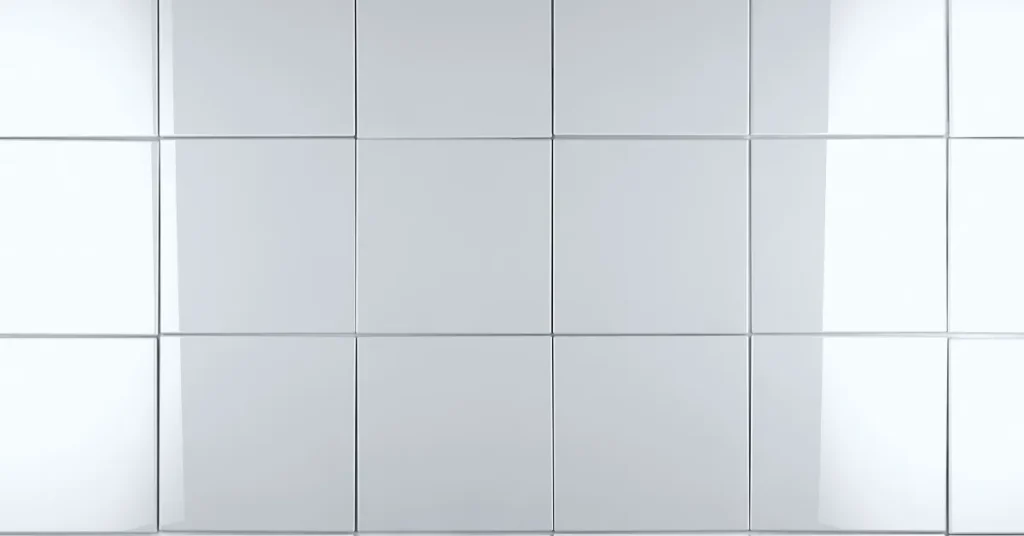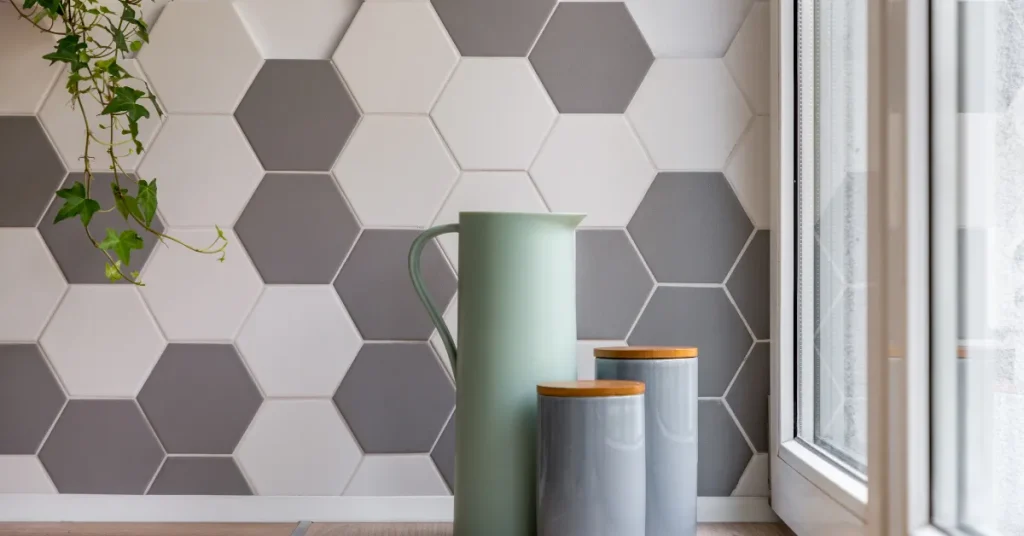Wall tiles typically range from 6mm to 10mm in thickness. Ceramic tiles are about 8mm thick on average.
Tiling your walls can dramatically transform the look of any room, from bathrooms and kitchens to entryways and living spaces. The choice of wall tiles is not only a matter of aesthetics but also practicality, as they are durable, easy to clean, and water-resistant.
Whether you’re planning a renovation or building a new home, understanding the thickness of wall tiles is essential for ensuring proper installation and achieving the best possible finish.
With various materials, colors, and finishes available, selecting the right tile thickness is crucial for both the functionality and the visual appeal of your tiled surfaces.
Accurate installation begins with knowing the exact dimensions of your chosen tiles, as this affects everything from the amount of adhesive needed to the alignment of the overall design.

The Essentials Of Wall Tile Thickness
Choosing the right thickness for wall tiles is crucial. It affects not only the look and feel of the space but also the installation process and durability.
Understanding the standard measurements and how materials influence tile thickness helps in making informed decisions.
Standard Thickness Measurements
Tiles vary in thickness to suit different surfaces and uses. Here’s a breakdown of the common thicknesses:
- Thin Tiles – Around 4mm, ideal for walls as they are lighter and easier to cut.
- Standard Wall Tiles – Typically range from 6mm to 10mm.
- Heavier Tiles – Can be up to 12mm, offer more durability and are better for high-traffic areas.
| Type of Tile | Thickness (mm) |
| Thin Wall Tiles | 4mm |
| Standard Wall Tiles | 6-10mm |
| Heavy Duty Tiles | Up to 12mm |
Material Differences And Their Impact
Materials used in wall tiles influence thickness and performance.
Ceramic tiles are most common for walls, offering a balance between weight and sturdiness, leading to a standard thickness of 6-8mm.
Porcelain tiles are denser and heavier; thus, they’re usually thicker, around 8-12mm. They withstand more wear and tear.
- Ceramic – Lighter, thinner tiles suitable for lower moisture areas.
- Porcelain – Thicker, heavier tiles perfect for high moisture environments.
- Glass – Varies widely in thickness and requires careful handling during installation.
Comparing Wall Tiles And Floor Tiles
When selecting tiles for a home or commercial space, it’s essential to understand the differences between wall tiles and floor tiles. Each type boasts specific features for its purpose. Let’s dive into the world of tiles and explore what sets them apart.
Design And Durability Factors
Different designs and durability are key when comparing wall tiles to floor tiles. Wall tiles come in a variety of sizes, colors, and patterns. Floor tiles, on the other hand, are specially made to handle heavy foot traffic.
- Wall tiles are usually lighter as they don’t support weight.
- Floor tiles are thicker and made with durability in mind.
It’s important to pick the right tile for the space. Doing so ensures they look good and last long.
Can Wall Tiles Be Used On Floors?
Generally, it’s not advisable to use wall tiles on floors. They may not withstand the foot traffic and could crack or chip. There are exceptions, though, with some wall tiles designed to be sturdy enough for floor use.
| Tile Type | Usage | Thickness |
| Wall Tiles | Walls only | 4-6 mm |
| Floor Tiles | Floors (& walls) | 6-10 mm |
Always check the tile specifications before making a choice. This can prevent damage and extra costs in the future.
Measurement Techniques For Tile Thickness

Understanding wall tile thickness is key for a perfect fit. Different wall tiles come in varying thicknesses. Proper measurement ensures a seamless installation.
This section guides you through the methods and tools you can use to gauge the thickness of wall tiles accurately.
Tools For Accurate Thickness Gauging
Having the right tools is essential for measuring tile thickness. These are some tools you can use:
- Calipers – precise measurement tool for thickness.
- Rulers – a more accessible but less precise option.
- Measuring tapes – flexible for non-uniform tiles.
Choose tools that promise accuracy and ease of use.
Professional Vs. Diy Measurements
Determining whether to measure yourself or seek professional help is important.
| Professional Measurement | DIY Measurement |
| Done by experts.Highly accurate.Ideal for large projects. | Done by you.Good for small tasks.Cost-effective. |
Professional measurements offer precision and peace of mind. DIY measurements are more affordable. Choose based on project needs and budget.
Tile Thickness And Installation Implications
Understanding tile thickness is crucial before you start tilling. It affects how you prepare, apply adhesives, and grout. Let’s explore these aspects in more detail.
Adhesives And Substrate Preparation
Tiles come in various thicknesses, typically ranging from 1/4 to 3/4 inches. The choice of adhesive and how you prepare the substrate depend on the tile thickness. For instance:
- Thin tiles (1/4 inch) might need a thinner set of adhesive to avoid oozing.
- Thicker tiles (1/2 inch or more) require a stronger adhesive for better hold.
Proper leveling is critical. Uneven surfaces result in poor tile adhesion and could lead to cracks.
Grouting Concerns With Varying Tile Thicknesses
The tile thickness also impacts the grouting process. Keep these points in mind:
- Thicker tiles may need more grout to fill deeper spaces between them.
- Consistent tile thickness assures an even grout line, crucial for a sleek finish.
Remember, correct grouting secures tiles and adds to the overall durability of your wall.
The Aesthetics Of Thickness In Tile Design
Choosing the right wall tile thickness can transform a space. Aesthetic appeal lies not just in color and pattern, but also in thickness.
It influences the visual outcome and space perception. Let’s dive into how tile thickness adds to the design dynamics and practicalities of wall tiles.
Visual Perception Of Tile Size And Space
Wall tile thickness tricks the eye. Thinner tiles can make small rooms look bigger. They meld seamlessly with the surroundings. Consider tile thickness for an airy feel or a more defined look.
- Thin tiles ensure a sleek, modern vibe.
- Thicker tiles offer depth and texture.
Light plays differently on various tile thicknesses. It can reflect more on a thin tile’s surface, amplifying brightness. Thicker tiles might absorb light, creating a cozy ambiance. Proper design choices can make any room stunning.
Trends In Thin Tiles: Pros And Cons
| Pros of Thin Tiles | Cons of Thin Tiles |
| Modern lookEnlarge small spacesLess weight on wallsFaster installation | Less durableMore fragile during handlingSpecial adhesives required |
Thin tiles represent a popular trend. They are stylish and light-weight. They suit minimalist designs beautifully. Yet, they require careful handling and installation. Always weigh these aspects before deciding.
Durability matters in tile selection. Certain areas like bathrooms need stronger tiles. Choose accordingly to ensure a perfect balance of function and form.
Choosing The Right Thickness For Your Project

When embarking on a tiling project, picking the perfect tile thickness is crucial. This choice affects both the tile’s durability and the seamless integration of your new tiles with the existing room layout and design.
Whether for walls in a busy kitchen, a serene bathroom, or a stylish living room, every space has unique demands. Let’s dive into understanding how to tailor tile thickness to your project’s needs.
Assessing Room Requirements And Usage
Before selecting tile thickness, understanding the specific needs of your room is key. Consider factors like moisture exposure, foot traffic, and wall structure. Here’s how to assess:
- Moisture Exposure: Bathrooms and kitchens need tiles that can handle wet conditions.
- Foot Traffic: While not as critical for wall tiles, it’s valuable to consider in mixed-use spaces.
- Wall Structure: Some walls can only support lighter tiles, influencing thickness choices.
Wall tiles can range from a slender 4mm to a robust 12mm. Thinner tiles are great for walls that can’t bear heavy loads, while thicker ones may be reserved for spaces needing extra durability.
Consulting Experts For Personalized Advice
Seeking guidance from professionals offers insights that ensure your tile choice is not just stylish but also practical. Here’s why their advice is invaluable:
- Experienced pros can gauge the compatibility of tile thickness with your walls.
- They can recommend appropriate thicknesses, considering your aesthetic and functional needs.
- Installers can spot potential installation hiccups that your chosen thickness might present.
FAQs About How Thick Are Wall Tiles
How Thick Is A Wall Tile Finish?
Wall tile thickness typically ranges from 1/4 inch to 1/2 inch. Standard tiles are often 3/8 inch thick.
What Is The Standard Thickness Of Wall Tiles?
The standard thickness for wall tiles ranges from 1/4 inch to 3/8 inch.
How Thick Is Wall Tile With Mortar?
Wall tile with mortar typically measures between 3/8-inch to 3/4-inch thick, depending on tile size and mortar type.
What Is The Normal Thickness Of Tiles?
The standard thickness for ceramic or porcelain tiles is around 1/4 inch to 3/8 inch. Natural stone tiles can vary from 1/2 inch to 3/4 inch.
Conclusion
Understanding the thickness of wall tiles is essential for a flawless installation. Each type varies, impacting durability and aesthetic.
For any tiling project, choose the right thickness. Remember, proper selection ensures a durable, stunning wall. Start planning your tiling adventure with this knowledge at your fingertips!
Resources:
1. https://basc.pnnl.gov/resource-guides/double-walls-more-insulation
